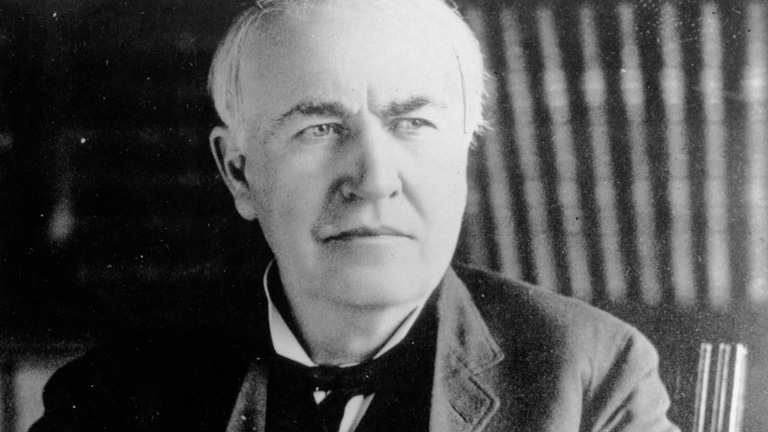one of the first important people in the beginning of development in editing is Thomas Edison.
Thomas Edison ran a film laboratory that were the kinetographic camera and he invented the kinetoscope. Edison has also developed the 35mm film strip that soon became the industry standard. he soon then went on to develop the projector to play the film strip on.

We then go onto The Lumiere Brothers.
Thomas Edison worked with the Lumiere Brothers and produced short films that happened to be long, static and lock-down shot. The Lumiere Brothers motion in the shot was all that was necessary to amuse the audience. Theses were the first films to show people and bikes and animals moving on the big screen. This can actually be seen in the film "Sortie d'usine." made in the year 1895 by the Lumiere Brothers.

The next person we are going to start looking at is G.A.Smith. At this point there was no story or editing in films so this means that films ran as long as film strips were in the camera. An Example of this can be seen in the film "The Miller and The Sweep". In the year 1899, G.A.smith made "The Kiss in The Tunnel". This film is said to be the beginning of narrative editing, also known as 'creating of a story'. Smith took advantage of the brief onset of darkness as they went into tunnel to splice (cut then stick two pieces of film together) in the shot of the couple. this is also known as "Phantom ride".

we then move onto George Melies.
George Melies was actually a magician who has seen the films that were made by the Lumiere Brothers. Melies saw this as a possibilities to make himself more noticeable to people. George Melies made a film called "The Vanishing Lady". This film was made in the year 1896 and he used the technique called 'In-Camera editing', BUT it has been rumored that he had discovered the art of stop motion purely by accident due to his camera broke down for a moment. Sadly though, he never worked out to move the camera to make close-ups or long shots which meant that his work was soon over looked by many which made the commercial world grow without him and it soon forced him out of business in the year 1913 and he sadly died in poverty and also alone.

Now we go on to look at Edwin S. Porter.
Porter first worked as an electrician before he went on to join the film laboratory of Thomas Alva Edision in the Late 1890s. He and Edision worked together to make the first longer interesting films. The first longer film was 6 minutes long and was called "Life Of An Amrican Fireman" in the year 1903. This became the breakthrough film for Porter! This film was among the first that had a plot, action and even a close up! The close up was of a hand pulling a fire alarm. When then go onto Porter's ground breaking film "The Great Train Robbery" in 1903. This film is an excellent example of how early films began to resemble the types of films we see today. It also one of the first films to add a bit of colour use in it.

Charles Parthe is the next person we move onto.
in Parthe first film 'The Horse That Bolted' in the year 1907, we see that he is the first to use an a example of a technique we now know as Parallel editing-cutting, which is when the camera splits into two different story lines. This is to show two story lines in the film. This is seen between the horse and the mail man. The first story line is the mail man, who is going around giving mail out to people then the second story line is the horse that up to no good and cursing trouble around town. Parallel editing-cutting is now used a lot is shows such as 'EastEnders' to show different story lines that is happening with a person in the show.

The last person we now go on to look at is D.W. Griffith.
Griffith was a U.S director and one of the early supporters of the power of editing. when watching his best remembered film 'The Birth Of A Nation' from the year 1915, we can see he used cross-cutting to show parallel action in different locations to show different parts of the war that he want us to see. Griffith was one of the first of all the early directors to actually use editing techniques in his film.

The Birth Of A Nation (1915)
Great Shauna, I would just add a little more detail to your explanation of "The Horse that Bolted" so that you clearly explain how that action is happening in two different places but at the same time.
ReplyDelete